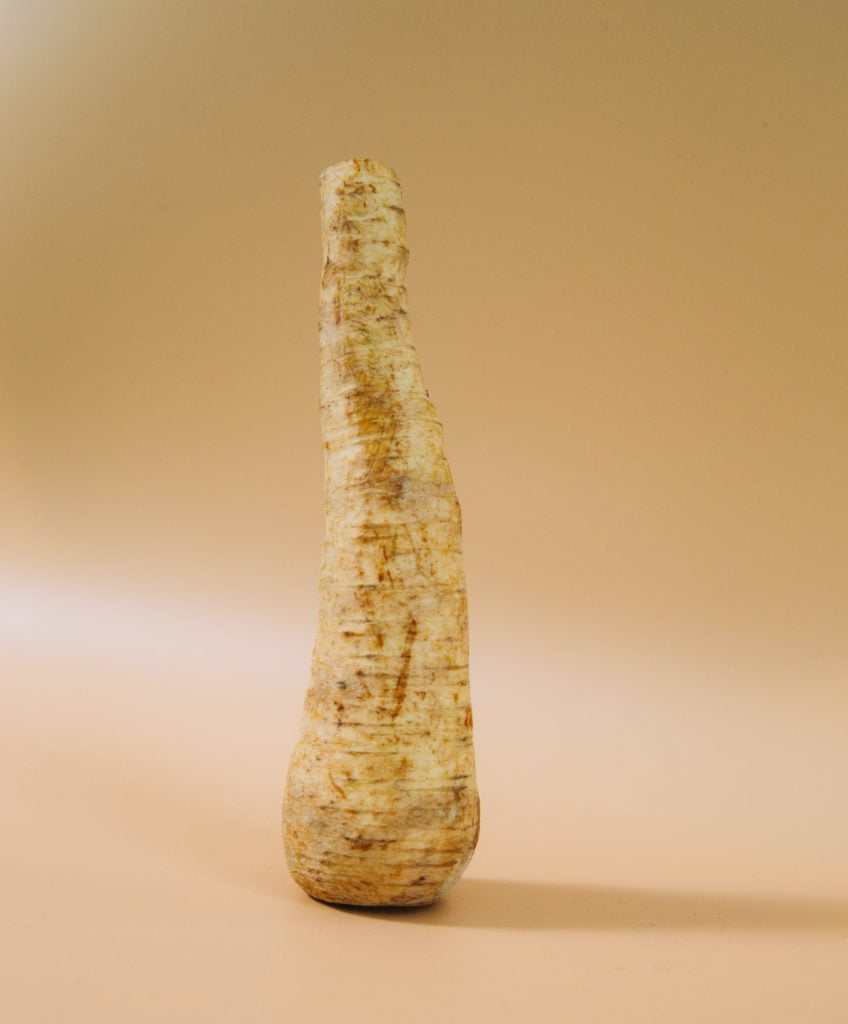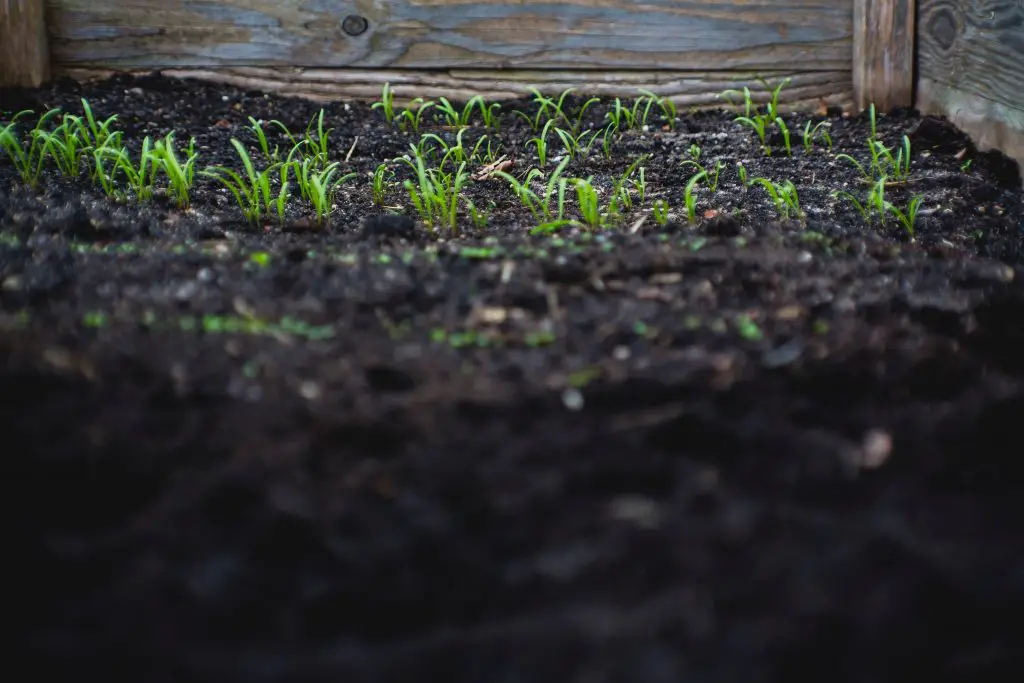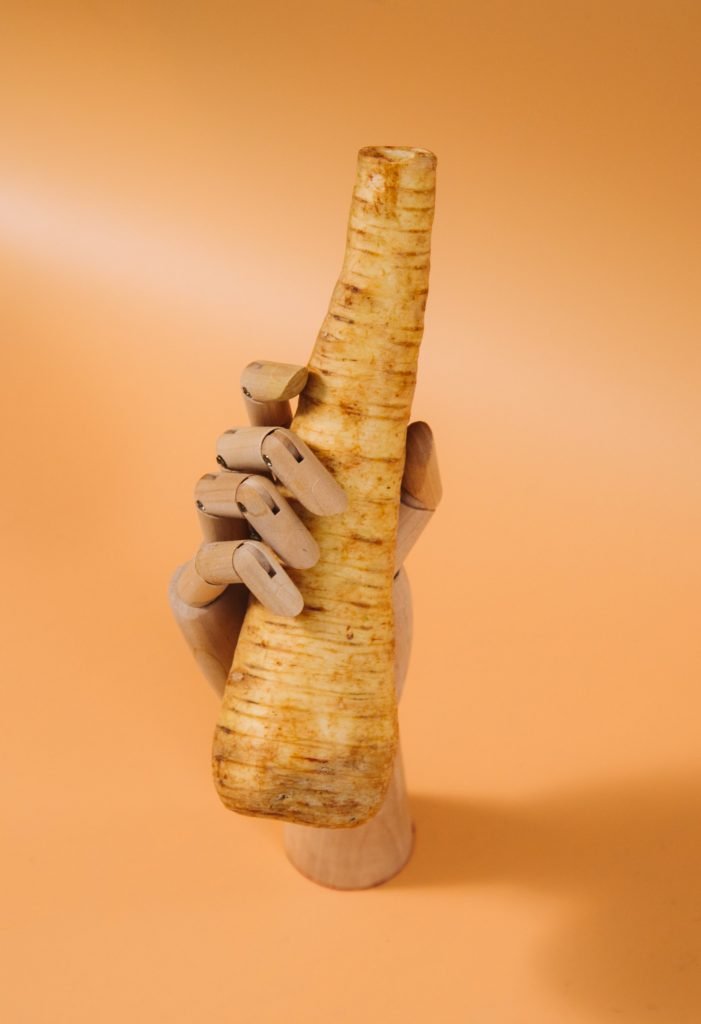Why Do Parsnips Fork? Parsnips are a notoriously difficult plant to grow. Their germination rate is slow and often unreliable and when they do germinate it is quite common for the roots to fork or be deformed. So what causes this?
There are three main reasons that deformities, such as forking are observed in Parsnips are;
- Excess nitrogen in the soil from the addition of fertilizers
- The obstruction of roots in the soil by things such as rocks
- The transplanting of parsnips from modular trays to the garden.
The addition of excess nitrogen has been shown, in root crops such as Parsnips and also carrots to increase the extent of forking. An example of this may be seen in a 2013 study conducted by the University of Dhaka where the percentage of forked root vegetables increased with the volume of fertilizer used.
However, it was also observed that the harvest increased significantly with the addition of fertilizer. The highest level of fertilizer used produced a yield almost twice the yield as the control sample which had no fertilizer added. Given, that the percentage of roots that forked was less than 10% would suggest that the benefits of fertilization far out weight the disadvantages for the home gardener.
The other common issue that causes deformation of the root is obstruction of the root by things within the soil. If the tap roots’ path is blocked by a rock it will often deviate around the obstruction resulting in a deformed root. In cases where the soil is very compacted and the roots have difficultly penetrating the soil short stunted Parsnips can be produced.
The other common issue is the transplanting of parsnip seedlings from the seed trays to the garden. The process of transplanting seedlings often causes the taproot to be broken. When this occurs the parsnip roots will produce multiple reshoots resulting in forking.
Many gardener use trays to raise seedlings due to the unreliable germination that occurs when seeds are planted in the garden. The main reason Parsnip seeds fail to germinate is lack of moisture.

The primary reason this occurs frequently is that Parsnip seeds are sown into shallow furrows that are typically 1-2 cm (0.5 inches) in depth. When the furrows are shallow the seeds can easily dry out, particularly in hot weather. The best method to ensure consistent germination is by priming the seeds, by pre-soaking them in water.
How To Prevent Parsnips from Forking?
The first step towards growing a successful parsnip crop is to ensure that the seeds germinate. The most reliable method is to germinate the seeds, before they go into the soil, which is best done by pre-soaking the seeds. This will ensure that the germination rate increases significantly.
To do this start by soaking Parsnip Seeds in water, for approximately 1 hour. After an hour transfer them onto a paper towel that is damp but not sodden. Place the towel in a sealed airtight container to ensure that the environment remains humid. Leave the container at room temperature for 3 to 5 days before planting. If the germination rate remains poor consider leaving the seeds for longer on the paper towel. To read more about this click here.
At this stage, the seed may be planted in the soil or in trays. However, as mentioned earlier in the article, the process of transplanting often damages tap roots. To avoid this one method I have seen is to plant into toilet roles. Once the parsnip seed has been germinated the entire toilet roll is planted into the ground to avoid disturbing roots.

It should be noted that the length taproot of the parsnip is surprisingly long even when the seedling has just emerged. At this stage, it is common to see a tap root that is 10 cm (4 inches) long. Due to the length of this root-only long cylindrical containers will avoid deformation of the roots.
Alternatives such as egg cartons, which are relatively shallow, will cause the roots to curl around the base of the carton resulting in deformation and forking of the taproot.
However, the disadvantage of planting in toilet roles is that it limits the size of the crop unless you want to collect a lot of toilet rolls. Additionally, it is more work planting because you need to dig relatively deep holes for planting. It is for this reason that I recommend that you sow directly into the garden.
When planting the Parsnip seeds into the garden, after soaking the seeds, it is best to make a furrow in the soil 1 to 2 cm (0.25 to 0.5 inches) deep and then water the bed well. Next, place the seeds in the furrow and cover them over. Water the bed again, and continue to water regularly over the next few days to ensure moisture is maintained while germination occurs. The rate of the watering can be reduced once the seedlings have emerged.
To ensure the seedlings survive, it is important to protect them from slugs and snails. This can be done by sprinkling snail pallets when the seeds are planted. Additionally, cloches may be used to provide a physical barrier against attack. Plastic 2 litre Milk Cartons with the bottom cut out are ideal for this purpose. When using the milk cartons it is best to remove the lid to allow ventilation.
As things don’t always go to plan in the garden I would also recommend preparing a second lot of seeds a week or so later, just in case there are any failures. This will ensure that you have a decent crop of Parsnips. Seeds can be purchased online from Seeds Now, Seeds for Generations, and St Clare Seeds in the US and at Thompson and Morgan in the UK.
Growing Conditions For Parsnips
Like most vegetables Parsnips’ prefer a location with at least 6 hours of sun. However, as the plants do not need to flower to produce a crop they will will tolerate shade. As mentioned earlier in the article, the soil should be loose and free of debris such as stones.
If you want to avoid forking do not add manure or fertilizer to the soil prior to planting. For soil preparation, I favor the No Dig method as it is simple, easy, minimizes work and suppress weeds. Using this method works by applying a thick layer of compost, 5 to 10 cm (2 to 4 inches) thick, once a year to the soil.

The worlds leading expert on No Dig soil, Charles Dowding has indicated that this method does not increase the degree of forking. He attributes this to the fact that the layer of compost is not dug into the soil. To read more about how to apply this method click here.
Sowings Parsnips is best done in Spring or Autumn. The reason for this is it avoids the Summer heat during germination which requires constant moisture.
If sowing direct into the soil it is likely that thinning may be required as the Parsnips mature. This is because it is often difficult to sow seeds thinly enough to allow sufficient space for growth. If thinning is required avoid disturbing the roots of the remaining Parsnips left in the ground.
Parsnips will typically take between 120 to 180 days to grow. However, it is best, to harvest the roots after the first frost has occurred. This is because the sugar levels within Parsnip increase making the root sweeter.
As Parsnips are highly tolerant of frost they will be happy to remain in the ground and can be picked as needed throughout the winter. Leaving them in the ground only becomes problematic if the ground begins to freeze. This is because the taproot can snap when the root is harvested.
Storing Parsnips
In locations where it is necessary to remove Parsnips from the ground, they can be stored in the refrigerator for around 1 month. For longer-term storage it is best to store them, unwashed in damp sand. This method was used in the Victorian Era to store root vegetables through the winter. It is effective because it mimics’ the conditions in the ground. If stored in this manner in a dark, cool place, the Parsnips will last up to 5 or 6 months.
